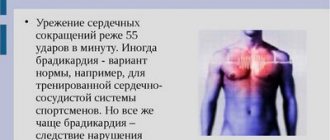For the human body to function properly, the coordinated work and interaction of all its systems is necessary. There are many components involved in the life support process. Destabilization of the quantity of one of them threatens the development of serious illnesses. A lack of vitamin D is especially dangerous. The second name of the component is calciferol. It contains several active provitamins: ergocalciferol and cholecalciferol - D2 and D3, respectively. The human body is able to synthesize the latter on its own under the influence of sunlight, while the former enters cells with food. Vitamin D deficiency can lead to serious disorders of life support systems and pathologies of internal organs.
The role of vitamin D in life processes
Until recently, it was believed that vitamin D was necessary for the body to fully absorb calcium. For this reason, the substance was prescribed to young children to prevent rickets. Adults were recommended to take the drug for osteoporosis, joint injuries and bone fractures. Scientists have recognized that the importance of the substance for human life has long remained underestimated. The fat-soluble compound affects all physiological processes, slows down the aging process, and increases the body's resistance to colds. Vitamin D deficiency limits physical activity and is a serious threat to human health.
How does a lack of vitamin D manifest in women?
The lack of this substance has a detrimental effect on everyone - children and adults, men and women.
Calcidiol uptake mechanisms have been found in the pituitary gland and tissues of the reproductive organs - ovaries, uterus, placenta. Therefore, its connection with reproductive health is quite obvious. A number of adverse effects on fertility associated with low calcitriol concentrations have already been established. Its deficiency is associated with lower fertility and a higher risk of adverse pregnancy outcomes. It also affects tissue and organogenesis of the fetus and newborn, and the subsequent risk of diseases in childhood and adulthood [3].
In pregnant women with a lack of vitamin D, their children are more likely to suffer from chronic diseases and other unpleasant symptoms - asthma, multiple sclerosis, type 1 diabetes, insulin resistance, schizophrenia, etc. It is also dangerous for pregnant women themselves. Preeclampsia is the most studied pregnancy complication associated with calcidiol deficiency. The protective effect of its sufficient level for the prevention of this dangerous condition for the health and life of the pregnant woman and child has been proven [1,3].
This essential vitamin even affects the process of preparing for childbirth. With a pronounced deficiency - less than 15 ng/ml - women were four times more likely to give birth by cesarean section. And at the stage of preparation for pregnancy you cannot do without it. Calcidiol also affects the ability to conceive. Studies have shown a higher rate of pregnancy and implantation of the ovum with high levels of 25(OH)D in the follicular fluid [1,3].
And even the quality of sexual life is influenced by this connection. A survey was conducted to determine the female sexual function index. The women answered questions about "desire, arousal, hydration, orgasm, satisfaction and genital pain" and rated their sex lives over the past four years. Respondents with high levels of vitamin D showed better results on all points [4].
The role of vitamin D in calcium metabolism and bone formation processes has long been studied. It affects bone metabolism in two ways. The first one affects the absorption and excretion of calcium, the second one affects the differentiation of osteoclasts and osteoblasts. Therefore, deficiency is especially dangerous for women in menopause, in whom a natural decrease in the level of sex hormones affects fragility and accelerated destruction of bone tissue. At low levels of the substance responsible for bone formation processes, negative processes only accelerate. But the problems that arise with a deficiency of this semihormone are much broader [5].
An insufficient amount of calcidiol appears not only as one of the main causes of osteoporosis, but also as a complex problem for the entire metabolism associated with the development of diseases of modern society - cancer, obesity and diabetes [1,5].
In view of the difficult epidemiological situation in the world, it is important to know that calcitriol is closely related to the level of immunity. Research is still underway, and the mechanisms of its influence are not completely clear, but the data available today prove that it enhances adaptive (acquired) immunity and promotes the activation of innate immunity [6].
There is evidence of the neuroprotective effects and effects of vitamin D on cognitive function. It has been established that calcitriol is able to penetrate the brain through the blood-brain barrier, and the maximum number of receptors for calcidiol is found in the thalamus, hypothalamus, cerebral cortex and hippocampus. Precisely in those areas that are responsible for cognitive function. In addition, it is able to activate the antioxidant protection of neurons [1].
Many other functions of this half-vitamin-half-hormone are still under study, but it is already completely clear that monitoring and maintaining its sufficient level in the blood plasma is an important task for women who care about their health.
The most likely causes of vitamin D deficiency
The most common causes of vitamin D deficiency in the body are:
- living in areas of northern latitudes;
- unfavorable environmental conditions;
- dark skin color;
- unbalanced diet (veganism);
- allergic reaction to dairy products;
- violation of the absorption mechanism in the intestine;
- celiac disease;
- pancreatitis;
- increased consumption of vitamin D due to excessive physical activity;
- some genetic disorders
Vitamin D deficiency often occurs during pregnancy, in patients with chronic liver and kidney diseases, during long-term hormonal therapy, and after taking antifungal drugs.
Vitamin deficiency occurs due to the transformation of the compound into inactive forms, the destruction of the substance as a result of impaired metabolic processes.
Main symptoms
Calciferol deficiency can be identified based on the following symptoms:
- Reduced processing of calcium, magnesium and phosphorus leads to the formation of cramps, muscle pain, and aching bones. The intensity of manifestations depends on the individual characteristics of the organism.
- Due to impaired calcium metabolism in the body, bones become more brittle and brittle, which causes frequent fractures.
- Decreased immunity creates susceptibility to viral infections leading to complications. The respiratory tract is especially vulnerable, damage to which can lead to bronchitis and pneumonia.
- The human body can accumulate sodium salts, the excess of which increases blood pressure. Calciferol actively counteracts this and its deficiency threatens arterial hypertension.
- With a deficiency of the vitamin, belching, bloating, diarrhea and other disruptions in the gastrointestinal tract are observed.
- The work of the sweat glands in the back of the head increases.
- Body weight increases.
- A lack of vitamin affects healthy sleep; the patient experiences insomnia at night and, as a result, lethargy and low performance during the day.
- Nervous system disorders are possible, mood swings and depression are observed. This occurs due to a disruption in the production of serotonin.
- Malfunctions of the cardiovascular system: rapid heartbeat, pain, changes in rhythm.
- Symptoms also include hair loss and bleeding gums.
A general blood test for vitamin D deficiency will show anemia, low levels of phosphorus, calcium and magnesium, and a high alkaline content.
Stages of vitamin D deficiency
To determine the concentration of vitamin D in the blood, a special blood test is prescribed, the results of which determine the level of supply of the substance to the body:
- Normal – more than 30 ng/ml (or more than 75 nmol/l);
- Vitamin D deficiency – 20–30 ng/ml (or 50–75 nmol/l);
- Acute shortage? less than 20 ng/ml (or less than 50 nmol/l);
- Severe form of vitamin deficiency - less than < 10 ng/ml (or < 25 nmol/l)
Manifestations of vitamin deficiency can be pronounced or barely noticeable, depending on the duration of the pathology and the nature of the complications.
Daily requirement
The daily amount of vitamin D that a person should consume depends on his age. Today the recommended indicators are:
| Age group | Daily dose, IU | Maximum allowed quantity (thousands), IU |
| Child up to 6 months | 400 | 1 |
| Baby from 7 months to one year | 400 | 1,5 |
| Children 1 – 8 years old | 600 | 2,5 — 3 |
| Teenagers 9 - 17 years old | 600 | 4 |
| Adults from 18 to 70 years old | 600 | 4 |
| Elderly over 71 years old | 800 | 4 |
| Pregnancy and breastfeeding | 800 | 4 |
The maximum daily dose of vitamin D that can be safely taken for preventive purposes (without a preliminary blood test) is considered to be 4 thousand IU.
Without the supervision of a specialized specialist, it is not recommended to take calciferol in an amount of 10 thousand IU for more than six months.
According to the recommendations of domestic endocrinologists, the daily intake of vitamin D in food consumed for a healthy person aged 18 to 50 years should be at least 800 IU, for people in the older age group - about 1 thousand IU, for expectant and nursing mothers - up to 1, 2 thousand IU.
The dangers of vitamin D deficiency for adults
The main danger for patients with vitamin D deficiency is falling from height. Brittle bones break under minor mechanical stress and contact collisions. In old age, the femur, thoracic and lumbar vertebrae, and collarbones are most often broken. It has been proven that vitamin deficiency will increase the risk of developing autoimmune diseases, including such dangerous pathologies as ulcerative colitis, bronchial asthma, lupus erythematosus, and various tumors. Lack of calcium associated with vitamin D deficiency almost always leads to problems with pregnancy and childbearing, and is also often the cause of congenital malformations.
Early aging, retinal damage, decreased visual vigilance, memory impairment, all kinds of nervous disorders - this is not a complete list of the consequences of a chronic lack of substance. Including vitamin D in the diet will change the picture of your health for the better, but many processes may become irreversible by this time. It is important to start treatment at compensated stages.
Daily norm of biologically active substance
The body's need for vitamin D depends on many factors. These are age, weight, area of residence, medical history and lifestyle. A greater deficiency in calciferol is observed in the elderly and people living in the northern regions.
To prevent vitamin deficiency, you should consume fish oil. It can be used by children from 4 months. The duration of the course is 2-3 months, then a break. If necessary, repeat use as prescribed by a doctor.
The daily norm of the biologically active substance is 200-600 IU.
Diagnostics
Patient complaints and medical examination are the basis for choosing diagnostic methods. Doctors study symptoms and laboratory diagnostic data, which can be used to judge the body’s supply of vitamins. If necessary, an instrumental examination is prescribed.
As part of the diagnosis, it is important to evaluate the parameters of phosphorus-calcium metabolism, in particular:
- calcium content;
- ionized calcium content;
- phosphorus content.
The specialist’s field of view is the level of parathyroid hormone in the blood, creatinine, calcium in daily urine.
Instrumental methods (ultrasound) determine fragments of ossification in the hip and shoulder joints, and changes in the structure of the tubular bones.
X-ray examination and (or) computed tomography is prescribed to determine skeletal abnormalities, identify signs of osteopenia, osteoporosis, deformation changes in the pelvis, and the presence of vertebral fractures. CT allows you to detect pathologically altered areas and fractures in the spine (thoracic and lumbar), in the femoral neck, and radial bones.
Adequate diet - vitamin D availability
Vitamin D is fat soluble, which facilitates its storage in the body. Foods rich in natural vitamin D:
- Sea fish
. Consumption of fish will provide the body not only with essential vitamins, but also with fatty acids. 100 grams of fresh eel equals 30 mcg of vitamin D. Mackerel, salmon and herring are great options for dinner. If you don't have fresh fish from a reliable source, you can choose canned tuna or sardines. Canned sardines contain about 40 mcg of vitamin D. - Eggs.
One of the most popular means of replenishing vitamin D reserves. The yolk is mainly rich in vitamin. - Beef liver
. Provides vitamins D, A, proteins, iron and other nutrients. - Dairy products.
Namely milk, cream, cottage cheese, butter.
- Shrimp, oysters.
Vitamin D obtained from the food consumed is usually insufficient. Nutritionists indicate the need to take this vitamin throughout the year. A suggested way to increase the amount of vitamin absorbed is to consume vitamin D fortified foods, such as regular fortified milk or breakfast cereals.
Treatment
Vitamin deficiency is eliminated by prescribing pharmaceutical drugs, which include vitamin D3 (colecalciferol), Aquadetrim, Vigantol. The dose of one drop is 500 IU (international units). The duration of treatment and dosage depend on the level of vitamin D supply in the body, identified during diagnosis.
After a course of therapy prescribed on an individual basis, tests should be taken. In some cases, lifelong use of the drug is prescribed to maintain the required level of the substance in the body. There is no single scheme; therapy is based solely on examination data.
Patients should not take vitamins uncontrollably - this is just as dangerous as self-prescribing medications. Taking active forms of vitamin D (calcitriol, alfacalcidol) can cause an increase in calcium in the urine to a critical level. If there is a need to prescribe calcitriol, treatment is carried out under the strict supervision of a physician. Therapy is prescribed for extremely low levels of calcium in the blood, with a high risk of developing vitamin D deficiency.
It has been established that an acute toxic condition while taking the drug is caused by doses exceeding 10,000 IU per day. Chronic toxic poisoning occurs at a dosage above 4 thousand IU of the active form per day for three months.
How to Determine Low Vitamin D Levels in Women
A deficiency of this substance can destroy health and beauty for years without showing any specific external signs. A cholecalciferol test based on the level of calciferol metabolite in the blood serum - 25(OH)D30 - will help you find out how things are going for you. You can undergo the test either with a doctor’s referral or independently in almost any private laboratory. The Russian Association of Endocrinologists has determined the optimal concentration of calcidiol in the blood of an adult to be 30-100 ng/ml [1].
Results and prognosis of treatment
Bone pathologies that develop in childhood or adolescence are difficult to correct. However, if you follow your doctor's instructions regarding taking the drug and doing physical therapy, you can significantly improve your health by strengthening bone tissue, muscles and ligaments. Over time, posture improves, neuroses disappear, and immunity increases. Patients suffer less from colds, and their resistance to diseases during seasonal infections increases.
To prevent vitamin D deficiency, it is important to eat right and get outdoors more often. The vitamin is found in a small number of foods and is absorbed in the presence of fat. The maximum content is observed in salmon, herring, mackerel, and beef liver. The substance is present in small quantities in dairy products (sour cream, cheese), egg yolk, and mushrooms.
Vitamin D deficiency is found, to one degree or another, in the majority of urban residents (only 10–15% do not need additional intake of the substance), in almost all women after the cessation of the menstrual cycle. It is important to know that for maximum absorption of the component and normal development of bone tissue, the body must have a sufficient amount of calcium, vitamin K, and protein.
Vitamin D deficiency is now a global public health problem, affecting approximately 1 billion people worldwide. It may result from insufficient exposure to sunlight, lack of vitamin D in the diet, accelerated catabolism due to certain medications, or due to various diseases that can affect its absorption and metabolism. In children, vitamin D deficiency can lead to rickets; in adults, this leads to osteomalacia (softening of the bones) and a number of other pathological changes.
Synonyms Russian
Vitamin D hypovitaminosis, vitamin D deficiency, rickets.
English synonyms
Hypovitaminosis D, Vitamin D deficiency, Vitamin D insufficiency.
Symptoms
Hypovitaminosis D can occur at any age, starting in infancy. This fat-soluble vitamin influences mineral metabolism and many other physiological functions. Vitamin D deficiency causes bone demineralization. In children, bones soften and become deformed over time, leading to slower growth, enlarged epiphyses of long bones, and deformities of the legs. Adults with osteomalacia may experience persistent bone discomfort and muscle pain, often leading to misdiagnosis of fibromyalgia, chronic fatigue syndrome, or arthritis. Since vitamin D receptors are present in skeletal muscles, its deficiency can lead to muscle weakness, persistent discomfort in the bones (most often in the sternum and legs), symmetrical lower back pain (more often in older women), and increase the risk of falls and fractures. Common manifestations of hypovitaminosis D include:
- frequent colds;
- chronic fatigue, decreased endurance;
- chronic pain (usually in the bones);
- depression, tearfulness, emotional lability;
- disruption of the normal functioning of the gastrointestinal tract (most often constipation);
- slow regeneration (wounds take longer to heal);
- sweating of the head;
- fragility of bones, fractures easily occur;
- muscle weakness, especially if there is an unexplained change in muscle strength;
- diseases of the teeth and gums (caries, periodontitis);
- hair loss;
- restless intermittent sleep;
- decreased memory and attention;
- unexplained infertility;
- increased blood pressure;
- causeless abdominal pain.
Research shows that suboptimal vitamin D levels are associated with an increased risk of cardiovascular disease. Thus, it was found that the level of 25-hydroxyvitamin D is inversely proportional to the following risk factors for the development of cardiovascular diseases: blood pressure more than 140/90 mm. Hg Art., blood glucose level above 6.5 mmol/l, body mass index 30 kg/m2 or more. Studies have also shown that vitamin D has antiproliferative effects in colon, prostate and breast cancer, reduces inflammation, etc. autoimmune. In children, hypovitaminosis D can manifest as rickets, a disease primarily affecting the bone and nervous systems. It is believed that about 60% of Russian children suffer from it, but since there are often no obvious symptoms or the disease is disguised as other pathological conditions, in many cases it is not diagnosed. Manifestations of rickets depend on the severity of vitamin D deficiency, but the most common of them are tearfulness, shallow intermittent sleep with a long process of falling asleep, increased sweating (especially at night), occipital “wiping” (balding) of hair, muscle weakness (“frog” belly, children do not tolerate walking well). The fontanelles in such children, as a rule, close later, teeth erupt in the wrong order and late, and subsequently they are more often affected by caries and have a risk of developing hypoplasia of tooth enamel. With the further development of the disease, typical bone deformations appear (X-shaped or O-shaped legs, deformation of the pelvic bones, overgrown parietal and frontal tubercles, the skull becomes disproportionately large, rachitic “rosary beads” - thickening of the ribs in the places of transition of bone tissue into cartilaginous tissue, depression of the lower parts of the sternum - “shoemaker's chest”). In severe rickets, on the contrary, protrusion of the sternum is observed. The disease can also affect internal organs, which can be manifested by frequent regurgitation, vomiting, abdominal pain, diarrhea or constipation, enlarged liver, and pallor. Rickets often leads to developmental delays in infants - they later begin to hold their heads, sit, stand independently, crawl and walk. If the disease goes far enough, the consequences will last a lifetime.
Who is at risk?
- People over 65 years of age;
- persons with congenital pathology, which may be the cause of vitamin D deficiency;
- exclusively breastfed children without vitamin D supplementation;
- people with dark skin or who overuse sun protection products with a high protection factor;
- people who, for various reasons, are exposed to insufficient sunlight, for example, those living in northern latitudes;
- taking medications that can accelerate catabolism and actively destroy vitamin D (for example, anticonvulsants, glucocorticoids, rifampicin, oral anticoagulants);
- obese persons (body mass index 30 or more);
- leading a sedentary lifestyle;
- vegetarians or people who do not consume foods containing vitamin D;
- persons with kidney, liver and/or gastrointestinal diseases (for example, celiac disease, Crohn's disease);
- pregnant and breastfeeding women.
Various studies have found that approximately a third of people with known hypovitaminosis D have no identifiable risk factors.
General information about the disease
Vitamin D is a fat-soluble vitamin that is formed when the skin is exposed to sunlight and is also present in a small number of foods, including those specially fortified with it. Vitamin D is one of the four fat-soluble vitamins (A, D, E and K). It acquires the ability to exert various physiological effects only after certain biochemical transformations that occur sequentially in the liver and kidneys. Exists in two forms: D2 and D3. Vitamin D2, also known as ergocalciferol, comes from fortified foods, herbal products, and supplements. Vitamin D3, also known as cholecalciferol, comes from fortified foods, animal products (fatty fish, cod liver, egg yolk, red meat, liver), dietary supplements, and can be synthesized internally if the skin is exposed to ultraviolet radiation from the sun. Both vitamins have different structures. Typically, people get 90% of their vitamin D from sunlight. Interestingly, the cutaneous biosynthesis of vitamin D3 via a feedback mechanism triggers the conversion of vitamin D3 into the inactive metabolites lumisterol and tachisterol, preventing an “overdose” of vitamin D3 under UV irradiation. After less than 1 minimum erythemal dose (the dose of radiation required to cause the skin to become red 24 hours after irradiation), vitamin D3 concentrations reach a maximum level and further exposure to sunlight merely leads to the production of inactive metabolites. Many scientists believe that vitamin D should be classified as a hormone because in the right biological environment it can be synthesized endogenously (by the body itself) and its active form, called calcitriol, is similar to other hormones (such as estrogen, cortisol and testosterone ) and is involved in the regulation of ion homeostasis (calcium, phosphorus and magnesium). Vitamin D controls genes responsible for the regulation of cell differentiation, proliferation, apoptosis and angiogenesis. It may be responsible for regulating up to 200 genes, including those that regulate immune function and the cell life cycle. Vitamin D also helps stimulate insulin production, inhibit renin production, and stimulate macrophage catechicidin production. Vitamin D receptors are found in most tissues of the body, it has endocrine effects on calcium metabolism and bone health, and is considered important for maintaining normal muscle function (including heart muscle) and immune function. Research has also shown that it may be useful as an adjuvant in the treatment of tuberculosis, psoriasis and multiple sclerosis, or in the prevention of certain types of cancer (eg, colon, prostate). Hypovitaminosis D is a common syndrome with well-established risk factors. Without the presence of activated vitamin D, normal bone metabolism is altered such that only 10% calcium and 60% phosphorus are absorbed. As a result, the skeleton becomes the body's main source of calcium and osteoclasts have to “dissolve” bone to raise serum calcium levels in the blood. In addition, vitamin D is necessary for normal absorption of calcium in the intestine. Therefore, its hypovitaminosis leads to osteomalacia and aggravates osteopenia and osteoporosis. Even subclinical (no symptoms) vitamin D deficiency is associated with significant health problems. Vitamin D deficiency leads to secondary hyperparathyroidism (increased function of the parathyroid glands), which entails a series of pathological processes.
Diagnostics
Diagnosis of hypovitaminosis D should be carried out in the presence of symptoms of deficiency, in people at risk, and also if low levels of calcium (hypocalcemia) or phosphorus (hypophosphatemia) are detected in the blood. The best indicator of vitamin D status is 25-hydroxyvitamin D, since it is a precursor to 1,25-dihydroxyvitamin D (the most active metabolite), the main circulating form of the vitamin and immediately reflects its intake both through the skin and through food.
25(OH)D and 1,25(OH)2D are a mixture of vitamin D2 and D3 metabolites. In most cases in clinical practice, there is no need for their separate determination and the study of the concentration of total 25(OH)D and 1,25(OH)2D allows us to obtain all the necessary information about the balance of vitamin D. Separate determination of vitamins D2 and D3 is carried out when assessing the dynamics of 25- hydroxyvitamin D in patients receiving vitamin D2 supplements. In addition, it is recommended to determine the concentration of calcium, phosphorus and magnesium in the blood and urine. When monitoring vitamin D therapy in children in the first year of life, as well as during annual preventive examinations, it is recommended to perform the Sulkowicz test. So, if there is an excess of the vitamin, the test will be sharply positive (3 or 4 points), and if there is a deficiency, it will be negative. In addition to a physical examination and laboratory diagnostics, instrumental research methods may also be needed: ultrasound or X-ray/densitometry of bones, ultrasound of internal organs.
Treatment
The goal of treatment is to normalize vitamin D levels, as well as to prevent recurrent hypovitaminosis. There are several types of drugs available to treat this condition. It is considered best to take vitamin D3 if possible because it is a natural form of the vitamin, binds more strongly to vitamin D binding protein, and is cleared more slowly from the bloodstream. In people with concomitant diseases or conditions that impair the absorption of the vitamin, the recommended dose should be selected individually, monitoring the concentration of vitamin D in the blood. Also, the dosage of drugs depends on the nature and severity of hypovitaminosis D. For example, an adult may be prescribed oral ergocalciferol (vitamin D2) at a dosage of 50,000 IU per week for eight weeks. After normalization of vitamin levels, it is recommended to switch to maintenance doses of cholecalciferol (vitamin D 3) at a dosage of 800-1000 IU per day from dietary and additional sources. If, after eight weeks of treatment, serum 25-hydroxyvitamin D levels still do not increase, the most likely cause is noncompliance with therapy or malabsorption (impaired absorption). During treatment, it is important to consume at least 1000 mg of calcium per day for premenopausal women and men and 1200 mg per day for postmenopausal women. In some cases, especially in children, physiotherapy - UV irradiation - may be prescribed. Oral vitamin D is contraindicated in individuals with granulomatous diseases (eg, tuberculosis), metastatic bone disease, sarcoidosis, Williams syndrome. Keep in mind that vitamin D is fat-soluble, meaning there are concerns about toxicity if taken in excess. Therefore, it is important to monitor the level of vitamin D in the blood and promptly diagnose its deficiency or excess. Prevention
Children under one year of age require 8.5-10 mcg of vitamin D per day. It is usually recommended to take oral drops (Vigantol, Aquadetrim) from September to April, 400 international units (IU) of vitamin D per day. To maintain normal vitamin D levels, children over one year old need 600 IU per day, and adults need 800 IU. Also recommended are daily physical activity, walks during the day (20 minutes or more depending on where you live), a balanced diet with foods containing vitamin D. In addition, it is necessary to maintain a healthy weight and monitor your health (especially the intestines, liver and kidneys). If your immediate family has osteoporosis or has previously been diagnosed with hypovitaminosis D, you should consult a doctor.
Also recommended
[40-167] Laboratory diagnosis of rickets
[02-032] Sulkowicz test
[06-106] Vitamin D, 25-hydroxy (calciferol)
[06-240] Vitamin D metabolites (25-hydroxycholecalciferol and 1,25 dihydroxycholecalciferol)
[06-020] Serum calcium
[08-033] Parathyroid hormone, intact
[06-031] Serum magnesium
[06-046] Serum phosphorus
[06-056] Phosphorus in daily urine
Elimination of vitamin D3 deficiency at the MEDKOM clinic
Our clinic’s specialists will conduct the necessary research and prescribe therapy aimed at restoring normal vitamin levels and preventing the consequences caused by long-term deficiency of the substance. If osteoporosis and other diseases associated with a lack of calcium in the bones are detected, we will prescribe the most effective treatment.
In each case, a personal course of therapy is developed, taking into account age, the nature of the course and the rate of progression of pathological processes. Vitamin D deficiency is diagnosed accurately and quickly, so it is advisable to periodically take tests to detect abnormalities for the purpose of self-control.
Pathological processes in the bones are asymptomatic for a long time (which is especially typical for osteoporosis) and manifest themselves in mature stages. At risk are all age groups, children, adults and the elderly.
To make an appointment with a specialist or take tests, call +7 (4912) 77–92–02 or sign up online by filling out the form in the “Contacts” section.
In adults
For many years it was believed that only children needed vitamin D for the correct functioning of all body systems. Studies have shown that under its influence, calcium enters the bones, promoting their proper formation and development, excluding the appearance of rickets. As for the mature age group, it was believed that there could be no deficiency of the element in men and women over 18 years of age, since the body is sufficiently exposed to sunlight. Further research in this area proved the opposite. In adults, the micronutrient controls cell division, has an anti-inflammatory effect, stimulates the activity of the immune system and promotes the production of antibacterial particles in the body, ensures optimal functioning of the nervous system, and causes the production of “antidepressive” mediators - dopamine and serotonin. When there is a shortage of it, the following occurs:
- brittle bones;
- muscle weakness, periodic cramps;
- frequent colds;
- lack of mood;
- irritability and depression;
- loose teeth, frequent caries;
- loss of appetite.









